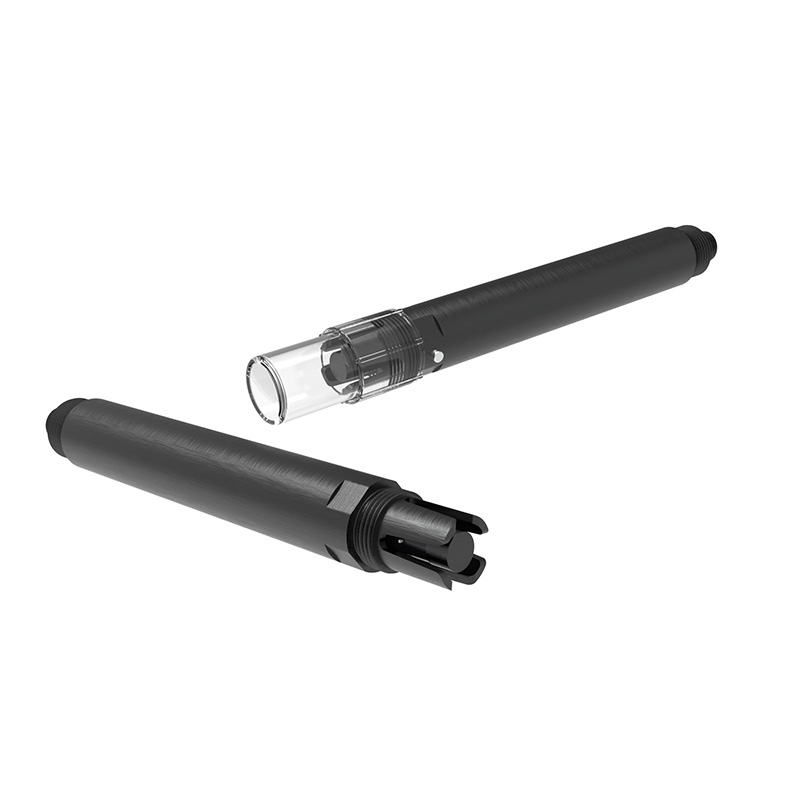Shandong Fengtu IOT Technology Co., Ltd
Sales Manager:Ms. Emily Wang
Cel,Whatsapp,Wechat:+86 15898932201
Email:info@fengtutec.com
Add:No. 155 Optoelectronic Industry Accelerator, Gaoxin District, Weifang, Shandong, China

Sales Manager:Ms. Emily Wang
Cel,Whatsapp,Wechat:+86 15898932201
Email:info@fengtutec.com
Add:No. 155 Optoelectronic Industry Accelerator, Gaoxin District, Weifang, Shandong, China

Model:FT-S5
Brand:fengtu
1.Application environment of online ammonia nitrogen sensor
Used for ammonia nitrogen concentration in environmental water quality, it can meet the measurement requirements of ammonia nitrogen in most industrial environment applications.
2. Product Features of online ammonia nitrogen sensor
The built-in pH electrode can detect the pH of water and compensate for ammonia nitrogen in real time according to the pH concentration.
Signal output: RS485 (MODBUS)
The electrode is a composite electrode, which is composed of a working electrode and a reference electrode made of polyvinyl chloride and ion active substances.
Internal signal isolation technology, strong anti-interference ability.
It has the characteristics of fast and accurate measurement and easy operation.
3. Technical parameters of online ammonia nitrogen sensor
| sensor | Ammonia nitrogen | PH |
| Measuring principle | Ion Selective Electrode Method | Electrochemistry (Salt Bridge) |
| Measuring range | 0-1000.00mg/L (default) 0-100.00mg/l (customizable) | 0-14.00 (PH) |
| Measurement accuracy | 10% of reading, ±0.5℃ | 0.01PH, ±0.01℃ |
| Response time | 5min | About 10s (98% flowing liquid) About 15s (98% stationary liquid) |
| Algorithm compensation | Temperature compensation, pH compensation | Temperature compensation |
| Shell material | ABS | |
| Cable length | Standard 5m | |
| Supply voltage | 12-24VDC (0.4W@12V) | |
| Measurement environment | Temperature 0~50℃ (no freezing), < 0.2MPa | |
| Waterproof grade | IP68 | |
| Installation | Immersion installation, NPT3/4 thread | |
4. Online ammonia nitrogen sensor maintenance and care
Before testing, remove the protective covers of the ammonium ion measuring electrode and the pH electrode. The electrodes should be soaked in clean water for 2 hours. After activation, they should be cleaned in deionized water and then tested. If the electrodes are not used for a long time (more than two weeks), they should be stored dry, and the sensing elements of the electrodes should be covered with protective caps. In order to obtain high-precision results, it is recommended to repeat these steps: remove the electrodes from the standard solution, wash, dry, and then immerse them in the standard solution (immerse for at least 2 minutes to obtain stable readings) to ensure that the electrodes are properly rinsed and pretreated.
Check whether the terminal is dry. If there is any stain, wipe it with anhydrous alcohol and use it after drying. Avoid long-term immersion in distilled water or protein solution, and prevent contact with silicone grease. The PVC film of the electrode that has been used for a long time may become translucent or have sediment. In this case, it can be rinsed with distilled water (or deionized water). If the electrode has been used for a long time and measurement errors occur, it must be calibrated.
In the aviation field, weather conditions play a crucial role in the safe takeoff and landing of flights. The FT-N10 Present weather and visibility sensor adopts the 35° forward scattering principle. It uses an infrared LED light source to emit infrared light and determines the visibility distance...
With the arrival of the rainy season, natural disasters such as heavy rainstorms and floods occur from time to time, posing a serious threat to people's lives and property. In the game against natural disasters, accurate rainfall monitoring is one of the key links, which can provide important or...
Tunnels are enclosed spaces with poor air circulation, and due to complex traffic structures and heavy traffic volumes, poor ventilation can easily lead to the accumulation of harmful gases such as smoke particles and carbon monoxide (CO). This significantly reduces visibility inside the tunnel and...
The Portable Weather Station is an important tool for modern environmental monitoring. It can simultaneously monitor parameters such as temperature, humidity, wind speed, wind direction, air pressure, illumination, PM2.5, PM10, noise, and rainfall. It adopts an ultrasonic wind speed and direction se...